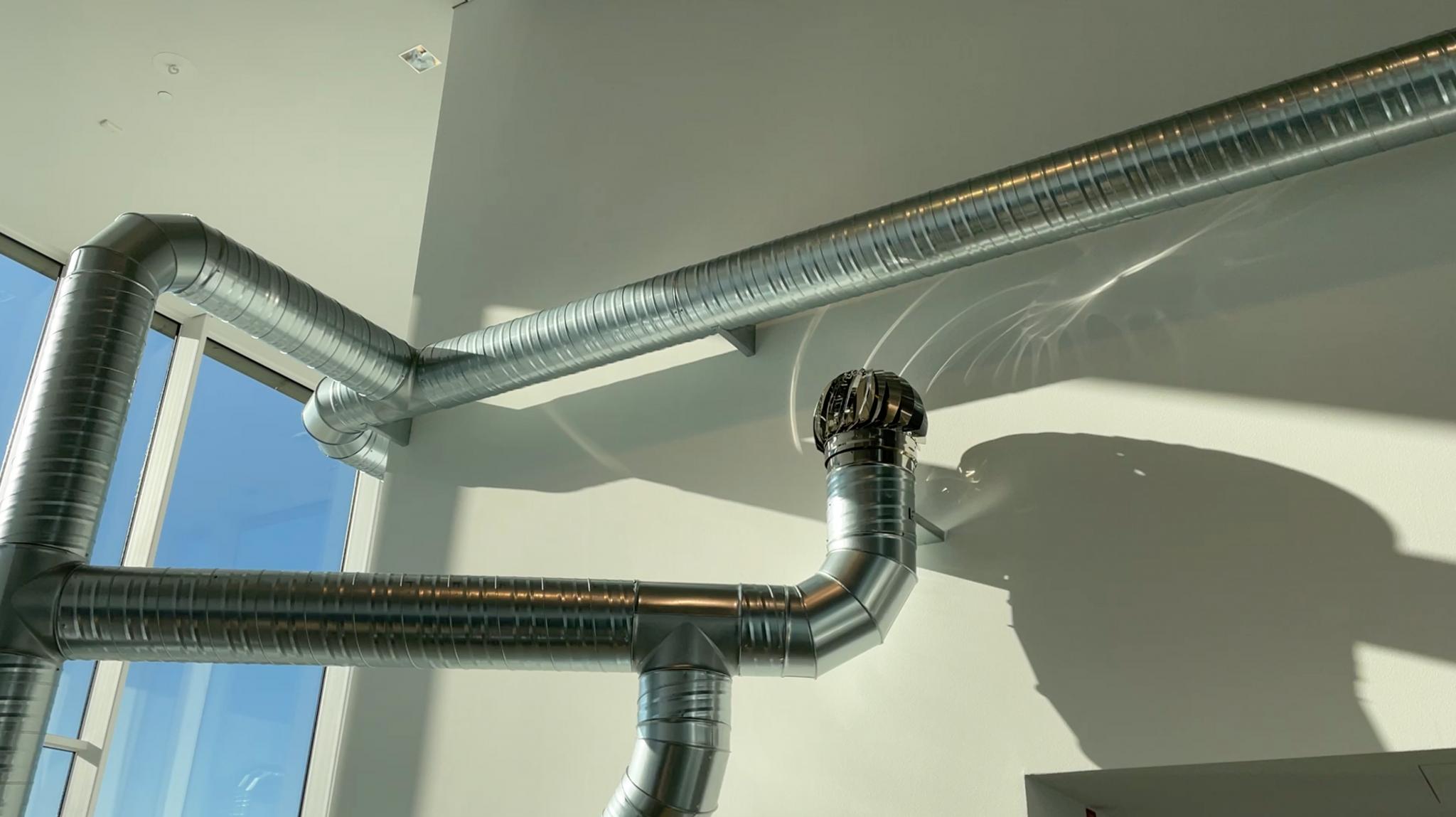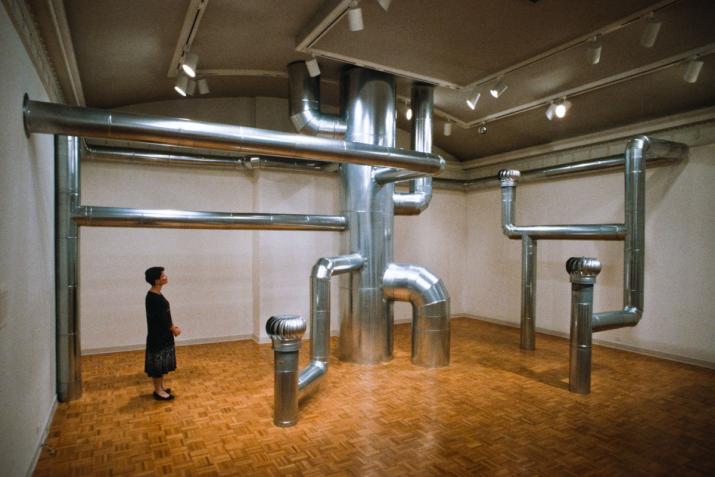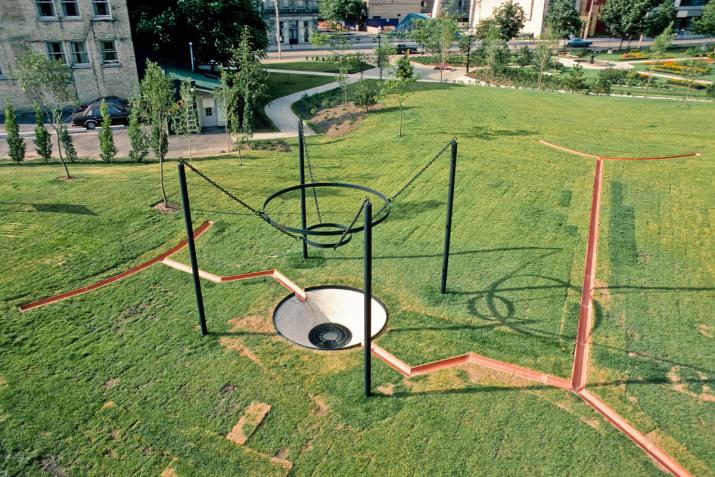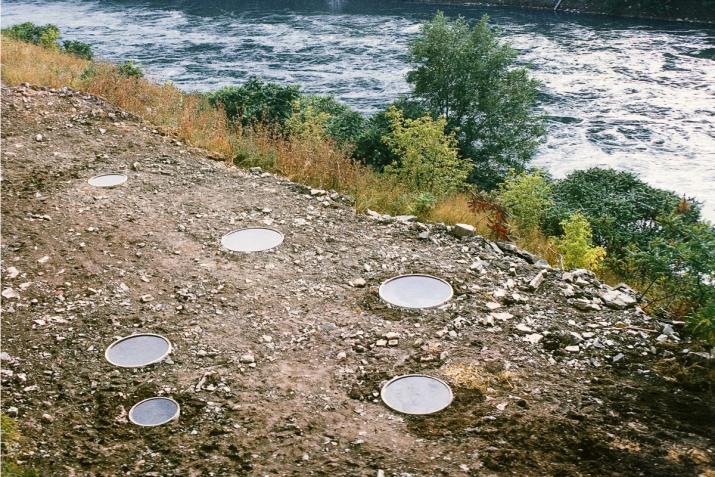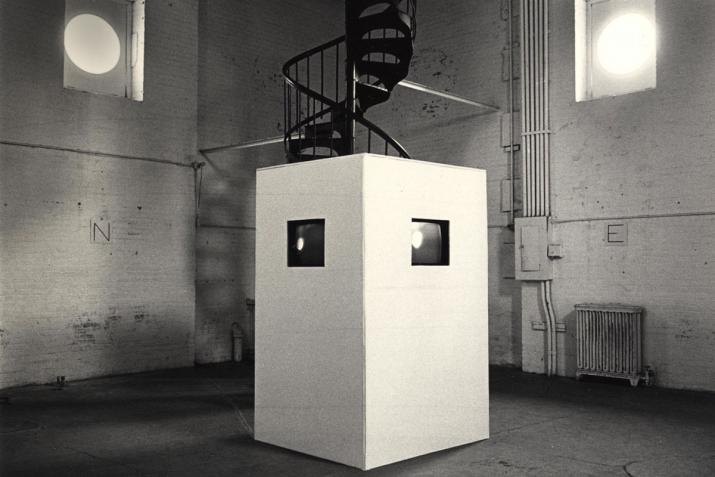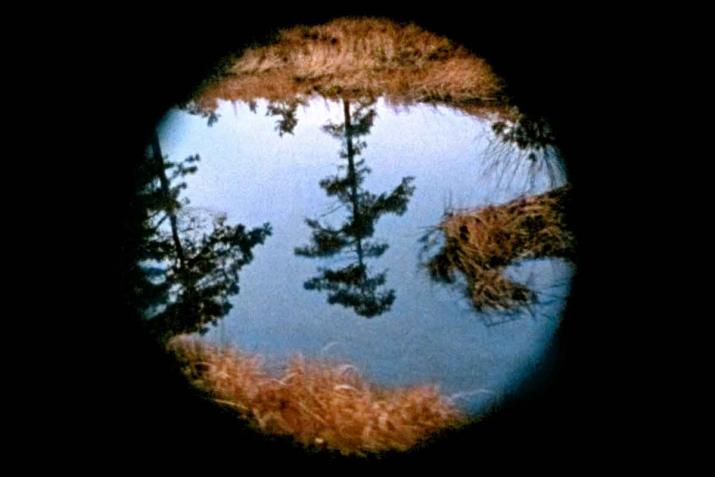Catch Basin
Catch Basin, an artwork that is also a land drainage system in St. James Park, Toronto, Canada, evolved out of my recent concern with exposing and utilizing functional systems, which are usually hidden beneath the surfaces of our existence. These structural, functional networks—electricity, drainage, heating, plumbing—are basic technologies which support our everyday lives, but are usually only considered when breakdowns occur.
Dark Star Park
More than five years ago, in the spring of 1979, I was informed by Thomas Parker, then supervisor of the Arlington County Planning Section, that I had been selected to make a sculpture in a small park being planned in Rosslyn, Virginia.
Hydra's Head
The Seneca Indians of New York have a saying: “Pools of water are the eyes of the earth.” At night the pools of Hydra’s Head “see” the stars brought down into their circumferences, by day they catch in their “view” sky, clouds, sun, and a bird or two. The moon is seen moving from pool to pool as I walk—a continuous recurrence of light encircled. Eddies and whirlpools in the river below, fed by the mad waters of Niagara Falls seven miles upstream, keep up a loud rhythm— there’s always the sound of water. Hearing and seeing come together in a vaporous fusion.
Pipeline
In March 1986, I visited Alaska under the auspices of the Visual Arts Center of Alaska in Anchorage, an institution partly endowed by the oil companies in Alaska.
The Visual Arts Center invited me there to experience the vast Alaskan Environment, anticipating that the experience would generate an idea for an artwork. For ten days I roamed the land looking at various sites, including the Trans-Alaska Pipeline. In July I returned to Alaska and constructed a work, which evolved from the strongest of my main initial impressions of that place.
Sun Tunnels
Sun Tunnels, 1973–76, is built on forty acres, which I bought in 1974 specifically as a site for the work. The land is in the Great Basin Desert in northwestern Utah, about four miles southeast of Lucin (pop. ten) and nine miles east of the Nevada border.
Some Notes on Video Works
In Points of View, an installation at the Clocktower Gallery, New York City, May 1974, four monitors were placed facing out N, E, S, W at eye level in the center of the room. They were enclosed in a white rectangular structure 61⁄2 x 41⁄2 x 41⁄2 ft. with monitor screens exposed at a height of 41⁄2 to 51⁄2 ft. This structure repeated the structure of the square room with its high walls and four windows N, E, S, W overhead.
Pine Barrens
“Oh yeah, I take walks pretty near every day. I just come back from taking a walk. I didn’t see anything today, just a few birds, that’s about all.”
“A Piney is a person who’s lived in the Pines all their life and seldom ever goes to a city, because we don’t care for the city. There’s too many people there. We like to be more alone, you know. I’m not cutting the city down or nothin’ like that, but here you got open spaces, you got a tree to go to if you know what I mean, and stuff like that.”
Holes of Light
1. Concrete vs. Ephemeral
Light, like sight, can be channeled, controlled so that shapes of light can materialize. In Holes of Light these shapes of contained light were outlined on the wall in pencil giving them even more of a physical presence, so that even when the light or sight is absent, a trace remains.
2. Light as the Concretization of Sight
The Time Being (For Robert Smithson)
For the time being, in the interim, in the course of time, from day to day, from hour to hour, until, in due time, and in the fullness of time, time endures, goes on, remains, persists, lasts, goes by, elapses, passes, flows, rolls on, flies, slips, slides, and glides by.
